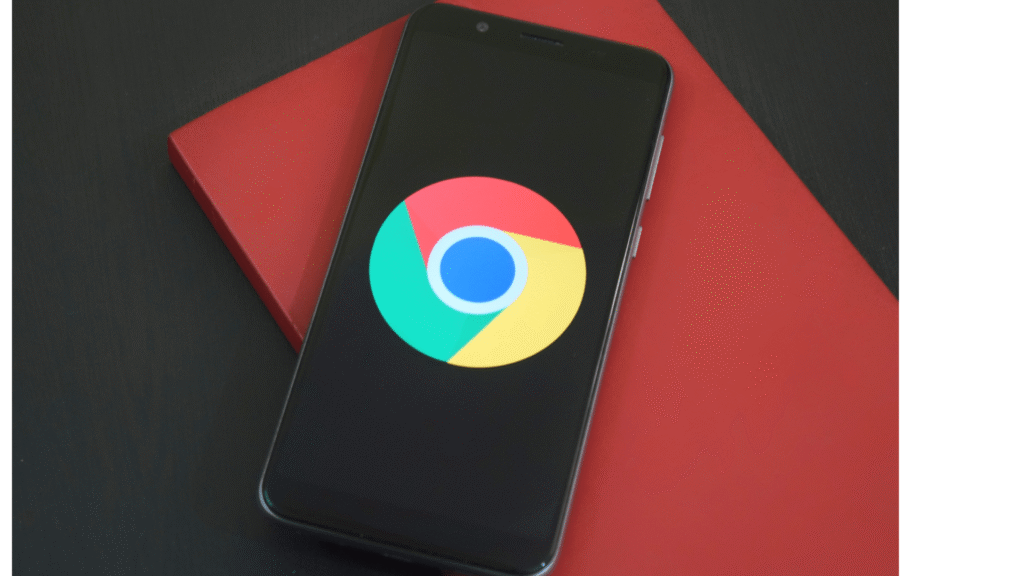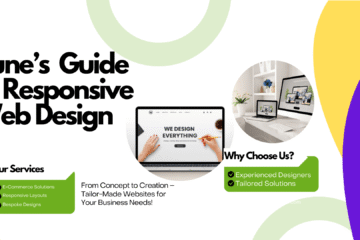Enhance your mobile-friendly website with smart mobile UX design, intuitive navigation, and touch-friendly features. This guide covers best practices in responsive web design, mobile-first navigation, and mobile usability to boost engagement and improve mobile SEO optimization. Create a seamless user experience that ranks better and converts more on all devices.
Table of Contents
Why a Mobile-Friendly Website Boosts Your SEO in 2025
As mobile internet usage continues to dominate, a mobile-friendly website has become essential for better SEO and higher visibility on Google. With the introduction of Google’s mobile-first indexing, your mobile site not the desktop version is what Google uses to determine search rankings. If your mobile experience is poor, it can negatively affect your entire SEO performance.
A mobile-optimized website ensures users can navigate your site smoothly on smartphones and tablets. This not only improves user experience but also increases your chances of ranking higher in mobile search results.
Responsive Web Design for Seamless User Experience
A key part of mobile SEO success is implementing responsive web design. This means your site automatically adapts to different screen sizes, providing a smooth experience on all devices. With mobile-first CSS and responsive frameworks, your layout, fonts, images, and navigation adjust perfectly to any screen.
Google rewards sites with excellent mobile usability and cross-device compatibility, making responsive design essential for modern websites. Fast load times, touch-friendly elements, and easy navigation all contribute to lower bounce rates and improved mobile SEO optimization.
Mobile-First Indexing: Google’s Ranking Priority
Google’s shift to mobile-first indexing means your website’s mobile version is the primary source used to rank content. A slow, poorly designed mobile site can drag down your visibility even if your desktop site is perfect. To succeed in this environment, your mobile version must be fast, functional, and user-friendly.
Focus on mobile page speed optimization, using compressed images, streamlined code, and clean navigation. By offering a strong mobile-friendly interface, your site aligns with Google’s preferences and delivers a better experience to your users.

Mastering Mobile SEO for Google’s Mobile-First Indexing
In the era of smartphones, mastering mobile SEO is essential for online success. With Google’s mobile-first indexing, your mobile website becomes the primary version used for ranking in search results. If your mobile presence is weak, it can hurt your entire SEO strategy—regardless of how good your desktop site is.
A mobile-optimized website with a mobile-friendly interface ensures that users and search engines both have a smooth experience. By focusing on mobile usability, fast loading times, and clear design, businesses can achieve better mobile search visibility and outperform their competitors.
Mobile SEO Optimization for Mobile Search Ranking
Mobile SEO optimization means creating a website that performs seamlessly on smartphones and tablets. A strong mobile strategy includes:
Responsive web design for all devices
Mobile-first CSS for layout priority
Mobile page speed optimization for faster load times
Touch-friendly design for better interaction
Simple, intuitive mobile website navigation
Google considers these elements when ranking websites in mobile search results. By improving your mobile website performance, you also enhance user engagement and lower bounce rates.
Websites that adopt a mobile-first web development approach are more likely to meet the expectations of both users and search engines. This boosts your ranking and improves your presence in mobile search engines.
Google Mobile Usability and Mobile-Friendly Test
Google offers tools like the Mobile-Friendly Test and Search Console’s Mobile Usability Report to help evaluate your website’s mobile readiness. These tools help check:
Whether your mobile responsive design displays correctly
If fonts are legible without zooming
Whether buttons and menus are touch-friendly
If layout supports smooth cross-device compatibility
Sites that pass these tests show better mobile website accessibility, fewer usability errors, and stronger performance in Google’s mobile-first indexing system.
Improving mobile usability not only increases your SEO score but also enhances your brand reputation and mobile conversion rates.
Enhancing Mobile UX with User-Friendly Design
A successful mobile-friendly website depends on more than just responsiveness—it must deliver a seamless, intuitive experience for users. Mobile visitors expect fast load times, easy navigation, and a layout that feels natural on smaller screens. Focusing on mobile UX design ensures that your site not only looks good on smartphones but also functions effectively, enhancing both engagement and SEO performance.
Mobile UX Design and Intuitive Mobile Interface
Effective mobile UX design prioritizes clarity, speed, and simplicity. An intuitive mobile interface makes it easy for users to find information, complete actions, and interact with your content effortlessly. Elements such as readable fonts, large clickable buttons, minimal scrolling, and clear call-to-action placements are critical in keeping users engaged.
A mobile-friendly website should guide users with visual cues, logical page structure, and consistent design patterns. This improves overall usability and reduces bounce rates, which is a key signal for mobile search ranking.
Touch-Friendly Design with Mobile-First Navigation
Mobile users interact with their fingers, not a mouse—so your site needs a touch-friendly design. Buttons, menus, and links must be sized appropriately for tapping and spaced to avoid accidental clicks. Smooth gestures, swipe support, and tap-friendly elements make the mobile experience far more enjoyable.
Implementing mobile-first navigation means designing the site’s structure from a mobile perspective first—then adapting for larger screens. Features like collapsible menus, sticky headers, and quick access icons help users navigate without frustration.
A truly mobile-friendly website doesn’t just fit the screen—it fits the user’s behavior and expectations. By focusing on touch-optimized interfaces and navigation built for mobile, you create a stronger user experience that boosts both satisfaction and search visibility.
Building Mobile-Friendly Layouts for All Devices
Creating a truly mobile-friendly website means designing flexible, responsive web design layouts that perform flawlessly on smartphones, tablets, laptops, and desktops. A well-crafted mobile-optimized website uses adaptive web design techniques to deliver consistent mobile usability and a seamless user experience across all screen sizes. Ensuring cross-device compatibility boosts your mobile search ranking and aligns with Google’s mobile-first indexing requirements.
Mobile-First Website Builder for Mobile-Friendly Layout
Leveraging a mobile-first website builder helps developers prioritize mobile-first design principles right from the start. These builders focus on crafting mobile-friendly layouts that load quickly and provide an intuitive, touch-friendly design. Features like mobile responsive design, mobile page speed optimization, and mobile usability enhancements ensure your site performs well on all devices. Building with a mobile-first CSS framework optimizes content delivery for smaller screens and improves your site’s overall mobile SEO performance.
Device-Agnostic Design with Mobile-Optimized UI
Adopting a device-agnostic design approach ensures your website’s mobile-optimized user interface (UI) adapts smoothly to any device or browser. This includes using responsive design frameworks and CSS media queries to adjust layouts, fonts, and navigation dynamically. A mobile-friendly interface with clear, legible fonts and touch-friendly navigation elements significantly enhances mobile usability and user engagement. This optimization boosts your site’s mobile website performance, resulting in higher rankings within Google’s mobile-first search results.
SEO Tactics for Mobile-Friendly Web Development
Optimizing your mobile-friendly website for search engines requires focused SEO tactics tailored specifically for mobile devices. Key strategies include implementing mobile-first design principles, improving mobile page speed optimization, and ensuring responsive web design for seamless user experiences across all devices. Using mobile usability enhancements, such as touch-friendly design and intuitive navigation, not only benefits users but also signals to Google that your site meets mobile SEO performance standards. These tactics help improve your mobile search ranking and align your site with Google’s mobile-first indexing approach.
SEO for Mobile Websites and Mobile-First SEO
Mobile-first SEO focuses on optimizing websites primarily for mobile devices since Google now prioritizes the mobile version for indexing and ranking. This includes optimizing content layout for small screens, enhancing mobile usability, and leveraging mobile page speed optimization techniques. Implementing AMP (Accelerated Mobile Pages) and ensuring a mobile-optimized website structure can also boost loading times and user engagement. Ensuring your site passes Google’s mobile-friendly test is essential to maintain strong visibility in mobile search results and improve your overall mobile SEO strategy.
Mobile-Friendly Website for Google’s Standards
To meet Google’s standards for a mobile-friendly website, your site must adhere to best practices like responsive design frameworks, fast loading speeds, and mobile usability optimization. Google’s Core Web Vitals metrics—such as LCP (Largest Contentful Paint), FID (First Input Delay), and CLS (Cumulative Layout Shift)—are critical for ranking well in mobile search. A mobile-optimized website that passes these performance benchmarks and offers an intuitive, touch-friendly interface will benefit from better rankings under Google’s mobile-first indexing policy. Staying updated with Google’s evolving guidelines ensures your website remains competitive in mobile search.
Enhancing Mobile Usability and Accessibility
Delivering a seamless experience on a mobile-friendly website requires focusing on both mobile usability and mobile accessibility. A website that is easy to navigate, quick to load, and accessible to all users—including those with disabilities—ensures better engagement and improved mobile search ranking. Optimizing for mobile usability means designing intuitive layouts, fast interactions, and clear content presentation, which keeps visitors on your site longer and lowers bounce rates.
Mobile Website Navigation for Mobile User Experience
Effective mobile website navigation is essential for a positive mobile user experience. Navigation menus must be simplified and optimized for touch interactions, with clear buttons and logical flow. Using mobile-first navigation techniques, such as hamburger menus and sticky headers, helps users find information quickly without frustration. This improves overall mobile usability and contributes to a mobile-optimized website that performs well under Google’s mobile-first indexing system.
Mobile Accessibility for Smartphone-Friendly Websites
Ensuring mobile accessibility means designing your smartphone-friendly website to be usable by everyone, including users with visual, motor, or cognitive impairments. This involves using scalable fonts, sufficient color contrast, ARIA labels, and keyboard navigability. Accessibility improvements not only comply with legal standards but also improve mobile website performance and user satisfaction. Google values accessible websites, making mobile accessibility a key factor in your site’s mobile SEO optimization and ranking.
Future Trends in Mobile-First Web Development
Implementing sustainable mobile design techniques means optimizing images, scripts, and server responses for energy efficiency and faster load times, resulting in superior mobile page speed optimization. This eco-friendly approach improves overall mobile SEO performance while appealing to environmentally conscious users.
On the other hand, AI-driven mobile design automates the creation of mobile-optimized websites by analyzing user behavior and adapting layouts for enhanced mobile usability and touch-friendly navigation. Using AI tools helps deliver a seamless mobile-friendly interface that supports better engagement and higher rankings in mobile search results.
5G Website Optimization with Mobile Viewport Optimization
The advent of 5G mobile networks is transforming user expectations for lightning-fast, responsive websites. Effective 5G website optimization involves enhancing mobile viewport optimization, optimizing for low latency, and improving mobile page speed to ensure quick content delivery. Using a responsive design framework with optimized mobile-friendly layouts ensures your site performs excellently on all devices. This focus on mobile accessibility, cross-device compatibility, and mobile-first CSS techniques helps maintain superior rankings under Google’s mobile-first indexing algorithm.
Conclusion:
In conclusion, mastering mobile-first web development and creating a truly mobile-friendly website is essential for staying ahead in today’s digital landscape. By embracing responsive web design, sustainable mobile design, and AI-driven mobile design, businesses can deliver exceptional mobile usability and enhanced mobile website performance. Optimizing for 5G networks with effective mobile viewport optimization ensures fast, seamless experiences across all devices. Prioritizing these trends and techniques not only boosts your mobile SEO optimization but also aligns your site with Google’s mobile-first indexing, helping you achieve higher mobile search rankings and better user engagement.

